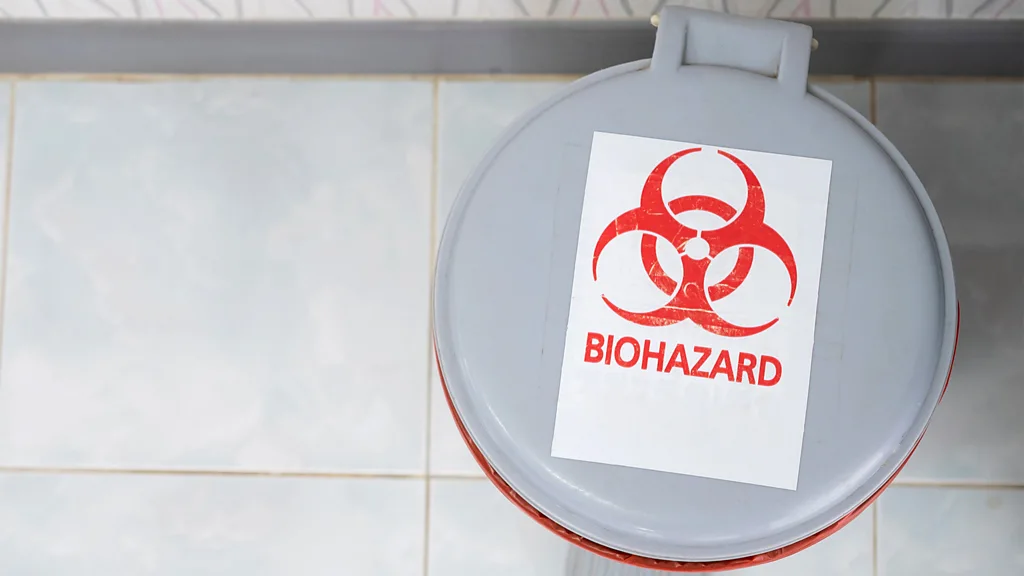
Future of Waste Placentas in Nepal
Burning medical waste, such as placentas, creates significant health and environmental risks. Hospitals in Nepal have started turning this hazardous waste into cooking gas, using an innovative approach that also improves sustainability.
Hospital staff near incinerators reported persistent coughs, breathing issues, headaches, sore eyes, and rashes. Black, noxious smoke from the chimney wafted through the windows of Tribhuvan University Teaching Hospital (TUTH) in Kathmandu. Staff closed the windows to protect vulnerable patients, including children in intensive care and adults with respiratory illnesses.
The Problem with Incinerators
“Keeping the windows shut caused the rooms to overheat and added to the discomfort,” recalls Deepak Mahara, former TUTH executive director who has now retired. “When the incinerator was operational, smoke frequently drifted into these sensitive areas, causing significant distress. The foul smell made the work environment uncomfortable.”
Staff did not realize their symptoms were linked to the incinerator’s emissions until 2014, when HECAF360 suggested replacing the furnace with an underground biodigester. Exposure to toxic air posed long-term health risks to staff, while the hospital also created broader public health and environmental threats.
Low-quality incineration of healthcare waste releases dioxins and furans, which are classified as human carcinogens. Dumped medical waste poses risks to anyone who comes into contact with it, including waste pickers.
The Shift to Cooking Gas Production
In response, HECAF360 proposed using a biodigester to eliminate hazardous emissions. Mahesh Nakarmi, HECAF360’s executive director, began by assessing all waste-handling procedures at TUTH. By 2017, TUTH had signed a contract to implement new waste segregation approaches, install autoclaves for disinfection, and construct a specially designed biodigester.
The biodigester initially aimed to manage food waste. HECAF360 built an underground biodigester at Bir Hospital in Kathmandu in 2011. Methane from digested food waste fueled cooking in the hospital’s staff tearoom. Nakarmi modified the biodigester to handle both placentas and food waste when working with hospitals that produced both.
Benefits of Turning Placentas into Cooking Gas
The biodigester has many advantages over incineration. Placentas are difficult to burn because they are mainly composed of water, requiring incinerators to reach high temperatures to effectively break down tissue. The incinerator at TUTH was a single-chamber, diesel-fueled unit without pollution control, making it ineffective at handling placentas. To sustain the fire, staff added materials such as paper, plastic, and PVC equipment, releasing harmful pollutants like carbon dioxide and dioxins.
The newly constructed biodigester, however, safely digested food and pathological waste, turning it into methane gas. The methane served as cooking fuel, reducing reliance on LPG. The biodigester could process up to 217 kg of food waste and 11.5 kg of pathological waste daily, producing enough gas to replace five LPG cylinders.
Environmental Benefits of the Biodigester
The biodigester has enhanced both the hospital environment and the surrounding community. With the incinerator replaced, hospital staff no longer deal with smoke and foul odors, reducing respiratory problems for both staff and patients. In addition, by diverting biodegradable waste away from landfills, the hospital has reduced methane emissions that contribute to climate change.
Replacing the incinerator with a biodigester also prevents the release of dioxins and other harmful chemicals, improving overall public health. According to the 2019 assessment, replacing the incinerator avoided 4.6 tonnes of CO2 emissions and eliminated diesel and methane gas emissions.
Health Improvements for Staff and Patients
The Future of Waste Placentas in Nepal
Installing biodigesters in healthcare facilities provides a sustainable alternative to incineration. Although funding remains a challenge, HECAF360 continues to promote biodigester use in other hospitals across Nepal. The World Health Organization’s recently published Global Framework for improving healthcare facilities, including waste management, may provide further support for expanding biodigester use.
The inventive approach taken by hospitals in Nepal demonstrates that healthcare facilities can turn harmful waste, such as placentas, into a valuable resource, thereby reducing pollution, protecting the health of patients and staff, and helping the environment. Today, the biodigester at TUTH fuels a stove used by staff for cooking, allowing them to relax with a cup of tea brewed using clean energy—a small but meaningful improvement in their work environment.
External Link: BBC
Internal Link: Kenkou Land





